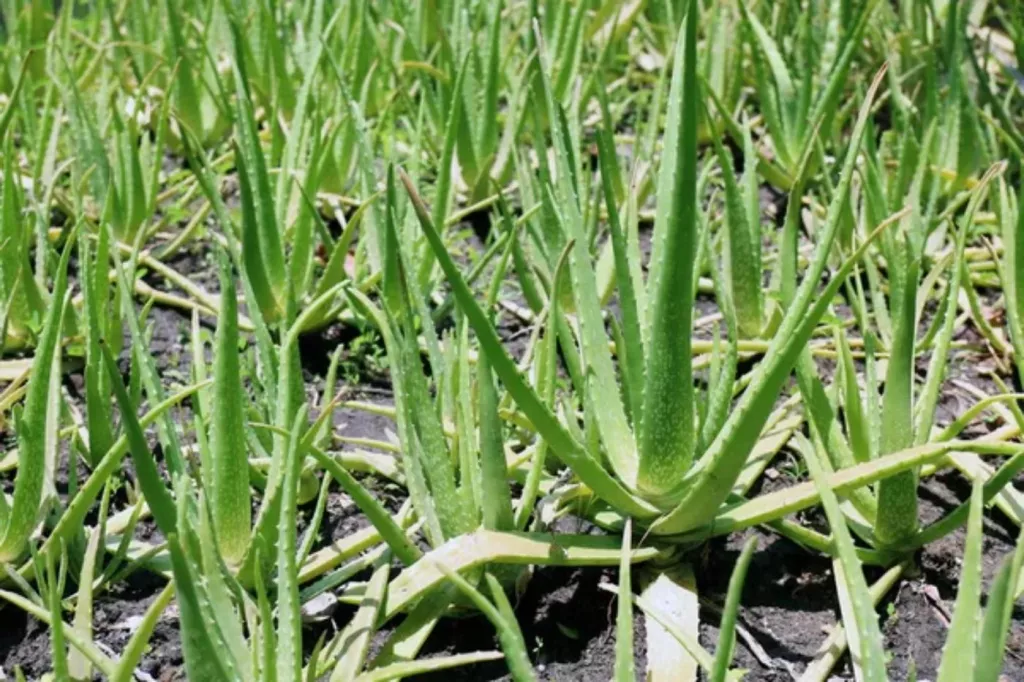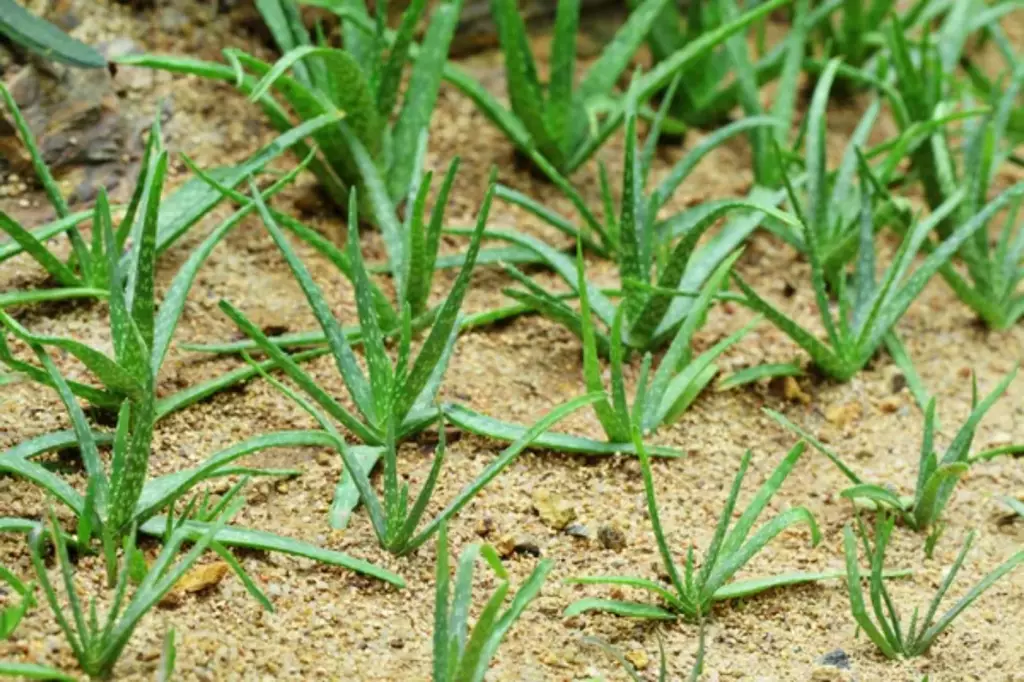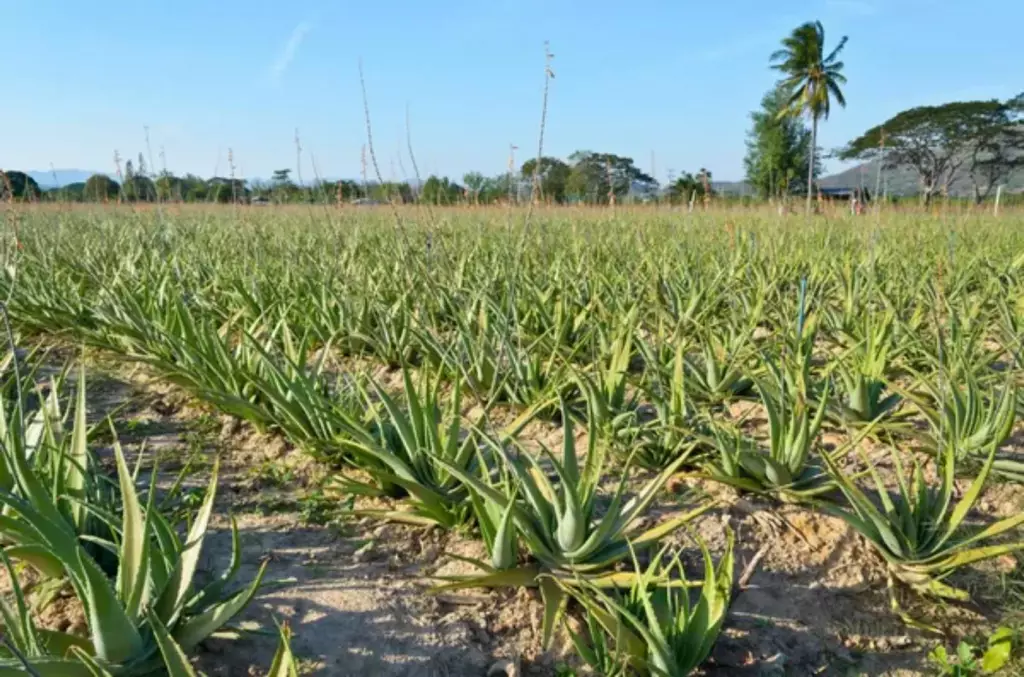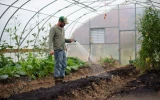Is Aloe Vera Farming Profitable? (2024 Breakdown)
The Aloe vera plant, known for its medicinal and cosmetic applications, offers unique cultivation advantages due to its resilience and growing market demand. Although its profitability hinges on factors like climate, soil quality, and market access, it is an intriguing option for farmers and investors alike. In this article, we'll show a detailed breakdown of the costs, revenue potential, and key strategies for success in Aloe vera farming in 2024.
In 2024, Aloe vera farming can be profitable with managed costs and market demand. Start-up costs are $25,000–$40,000 per acre; yields are 15–20 tons at $150–$200 per ton. Annual ongoing costs are $5,000–$10,000, with an ROI of 25%–35% and a break-even point within 2–3 years.
The key to maximizing profits in aloe vera farming is tapping into high-value markets like pharmaceuticals and cosmetics. Want to know the secret ingredient to soaring profits? It's all about smart marketing and finding the right buyers.
Summary
- Aloe vera farming can generate an estimated profit of $2,000 to $9,000 per acre after the initial 2-3-year establishment period.
- The profit margin varies significantly based on the end market for the aloe vera, with raw aloe leaves having 10–20% margins and value-added cosmetics and gels generating 30–40% margins.
- Major costs involved in aloe vera farming include land, irrigation systems ($500 to $3,500 per acre depending on complexity), processing facilities ($50,000 to $250,000), and ongoing labor ($15,000 to $50,000 per year based on skill and experience).

On this page:
Aloe Vera Farming Is Profitable in 2024
Aloe vera farming profit per acre
The profitability of farming aloe vera depends on a range of factors including market demand, harvesting techniques, and yields per acre. Here's a simplified breakdown:
| Startup Costs | Net Profit | ROI | Breakeven (years) |
|---|---|---|---|
| $25,000 | $7,250 - $9,000 | 29% - 36% | 2 |
| $40,000 | $2,250 - $4,000 | 6% - 10% | 3 |
Aloe vera farming can be profitable with estimated returns of $2,000 to $9,000 per acre after the initial 2-3 year establishment period. Lower startup costs improve profit margins.
Initial investment and expenses for aloe vera farm
To kick off your aloe vera farm, you will have to account for costs such as planting material and labor.
| Investment & Expenses | Estimated Cost Range |
|---|---|
| Planting material (per shoot) | $0.50 - $1.00 |
| Labor wage (per day) | $120 - $250 |
| Farmyard manure (per kg) | $4.00 |
| Nitrogen fertilizer (per kg) | $10.50 |
-
Planting material refers to the aloe vera shoots or suckers needed to propagate the plants. These typically cost $0.50 to $1 per shoot.
-
Labor is a major ongoing expense. Daily wages for farm workers range from $120 to $250 per day.
-
Farmyard manure provides organic nutrients for the aloe plants. It costs around $4 per kg.
-
Nitrogen fertilizer is an inorganic nutrient source that costs approximately $10.50 per kg.
Yield and revenue from an aloe vera farm
From the second year after planting, you can begin to harvest your aloe vera plants. Typically, three harvests can be conducted in a year. Each harvest generates fresh leaves, which are your primary source of revenue.
| Harvest Factor | Estimated Yield Range |
|---|---|
| Leaves per harvest | 3-4 (fresh leaves) |
| Harvests per year | Up to 3 times |
Profit margins from different market segments
The profit margin for aloe vera farming can be quite substantial. Your revenues will largely be a result of high market demand for aloe vera products, which range from medicinal to cosmetic applications.
| Market Segment | Estimated Profit Margin |
|---|---|
| Raw Aloe leaves | 10-20% |
| Aloe vera juice | 30-40% |
| Cosmetics & gels | 30-40% |
- Raw aloe leaves: The raw aloe leaves market has an estimated profit margin of 10-20%. This lower margin reflects the costs of harvesting, cleaning, packing, and shipping fresh leaves while still at a price competitive with other raw ingredients. Profitability comes from high demand and rapid sales before deterioration.

-
Aloe vera juice: The aloe vera juice market has a profit margin of 30-40%. Juice production requires processing the aloe leaves and bottling the liquid, but allows for a longer shelf life compared to raw leaves. Branding and wider retail distribution justify a higher retail price and profit margin.
-
Cosmetics and gels: Turning aloe into a formulated product allows for the highest pricing and profits. Cosmetic brands charge a premium for products containing aloe due to its beneficial skin properties. The low incremental cost of adding aloe also boosts margins.
Analyzing Costs Involved in Aloe Vera Farming
Below is a breakdown of the costs involved in establishing and maintaining an Aloe vera farm:
Initial investment costs to start an Aloe vera farm
These are the upfront costs required to establish your farm, considering land, equipment, and initial operations.
| Initial Costs | Estimated Cost Range |
|---|---|
| Land | Variable by location |
| Equipment | $1,000 - $10,000 |
| Resource allocation | $100 - $500 per acre |
| Processing Facility | $50,000 - $250,000 |
| Storage | $5,000 - $20,000 |
| Transportation | $10,000 - $50,000 |
| Irrigation system | $500 - $3,500 per acre |
-
Land costs: Securing land is a primary expense. Depending on location, prices vary significantly.
-
Equipment costs: From basic farming tools to more specialized machinery, your initial outlay might be substantial.
-
Resource allocation: This includes seedlings or shoots, and water supply for irrigation.
-
Infrastructure costs: Think about processing units, storage, and transportation facilities.
-
Cost of installing irrigation systems: Essential for the health of your Aloe vera plants, with costs depending on the system's
complexity.
| Item | Estimated Cost Range |
|---|---|
| Drip irrigation | $1,000 - $1,500 per acre |
| Sprinkler irrigation | $2,500 - $3,500 per acre |
| Flood irrigation | $500 - $1,000 per acre |
Operating costs to maintain Aloe vera farm
| Operating Cost | Estimated Cost Range |
|---|---|
| Fertilizers | $50 - $200 per acre |
| Pest management | $100 - $300 per acre |
| Field workers | $15,000 - $50,000 per year |
| Farm managers | $35,000 - $80,000 per year |
- Labor: Your most variable expense, depending on the scale of your operation.
- Fertilizers and pest management: Both are ongoing costs to ensure healthy growth and protection against pests.
Factors Affecting Aloe Vera Farm Profitability
When you venture into aloe vera farming in 2024, your profits will be influenced by several key factors such as the following:
Cultivation conditions and production
Optimal soil and climate conditions produce healthy aloe vera plant growth. The plant thrives in warm climates with well-drained soil.

You need to get your land preparation just right, as it sets the groundwork for a successful crop. Also, regular weeding and appropriate propagation methods impact your overall production levels.
Timing of harvest
The timing and methods used in harvesting can affect both the quantity and quality of the aloe vera. Quick and efficient harvesting ensures high-quality produce, which can demand better prices.
| Harvesting Period | Expected Yield Range |
|---|---|
| Early season | Low-medium |
| Peak season | Medium-high |
| Late season | Low-medium |
Climate and rainfall
Aloe vera requires moderate rainfall. Excessive water can lead to root rot, while too little can stress plants and reduce yields.
Sustainability and market demand
Sustainability practices in farming can have long-term benefits and attract consumers willing to pay a premium for ethically produced goods. Plus, aligning your supply with current market demand is vital for maximizing your profits.

Marketing and business plan
Your ability to market your aloe vera effectively, by understanding your target audience and distribution channels, is essential. A solid business plan aligns your operations with financial goals and marketplace realities.
Minimizing Costs and Maximizing Profits in Aloe Vera Farming
When engaging in commercial aloe vera farming, your success hinges on balancing two critical aspects: minimizing costs and maximizing revenue. A strategic business structure and smart farming techniques are essential to achieve this balance.
Cost minimization strategies
-
Efficient use of resources: You need to ensure resources like water and fertilizer are utilized efficiently. Drip irrigation is one example of a water-saving technique that can significantly reduce your water bill and minimize waste.
-
Organic farming and sustainable practices: By implementing organic farming, you reduce the need for expensive chemical inputs. Not only does this lower costs, but it can also allow you to tap into higher-priced markets that pay a premium for organically grown products.
-
Business structure optimization: Streamline your operations by choosing a business structure that minimizes tax liabilities and maximizes eligibility for farming grants or subsidies.
Revenue maximization strategies
-
Direct marketing: By selling directly to consumers, you cut out the middleman and retain more profit. Develop a stout marketing strategy using social media and online platforms to reach your audience.
-
Partnerships: Form partnerships with local health stores or cosmetic companies that can use your aloe vera products, this can provide a steady demand and better pricing.
-
Diversification: Increase your revenue by diversifying the aloe vera products you offer, such as selling aloe vera juice or skincare products alongside raw aloe leaves. Offering value-added products is a sure way for small farmers to make more money.
Where to Sell Aloe Vera
When you're ready to sell your aloe vera, you have several options to explore. Each market has its nuances, and understanding where your product fits best can result in better profit margins.
Here's a quick look at potential revenue from different selling points:
| Selling Point | Estimated Price Range per Kg |
|---|---|
| Farmers market | $3 - $5 |
| Cosmetic companies | $4 - $7 |
| Online direct sales | $5 - $8 |
Selling to local markets
This includes:
- Farmers markets
- Health food stores
- Local pharmacies
Selling directly to consumers at local farmers markets provides lower overhead costs which allow pricing flexibility. You can build relationships and give out sample products.

Marketing products to commercial buyers
You can sell bulk quantities to the following commercial options looking for natural ingredients.
- Cosmetic companies
- Pharmaceutical firms
- Health product brands
However, this requires meeting quality and regulatory standards. Sales cycles might also take longer.
Online sales channels
Sell directly to consumers via:
- E-commerce websites
- Social media platforms
- Your dedicated product website
This allows maximum margin but requires marketing and fulfillment costs.
Remember, direct sales to end consumers, especially through online channels, can boost your profit margin. However, collaborating with commercial buyers often leads to steady, long-term contracts. It's essential to weigh your options and decide what works best for your farming business.


